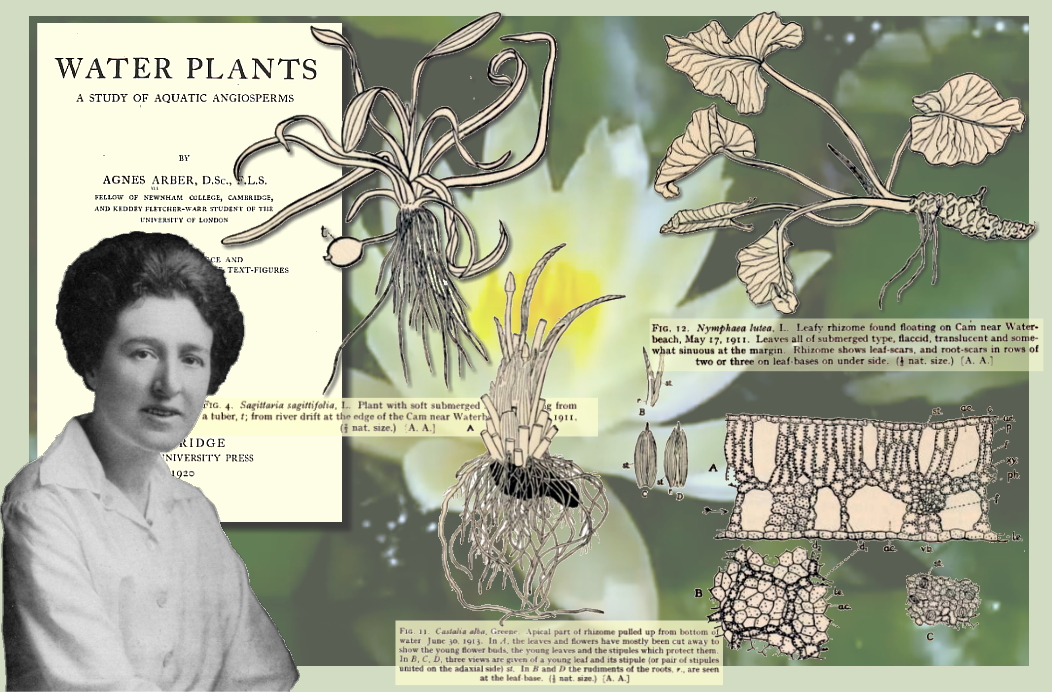No Grass Grew Under These Feet!
On February 23, 1879, British botanist Agnes Arber was born. From her mid-teens through early career, she was able to spend time assisting plant morphologist Ethel Sargant from whom she acquired her research interest and style of investigation. Arber taught at University College, London, after completing her doctorate there.
Her particular interest was in the comparative anatomy of plants, especially monocotyledons or monocots. These make up the majority of the world’s agricultural biomass that include rice, wheat, maize, sugar cane, bamboos, and pasture grasses like timothy, bluegrass, and fescue that fill the grasslands around the world. Arber specifically investigated flowering monocots like onion, asparagus, orchids, daffodils and lilies. The monocot interest led her to meet and marry a fellow Cambridge botanist, E. A. Newall Arber, who had his own specialty in paleobotany. A few years into her marriage, she published her first book Herbals: Their Origin and Evolution that became a botanical classic with her own carefully detailed illustrations, scientific thoroughness and relevant nuggets of botanical history.
When her husband died young, Arber was left with their only child but continued to work as before. When her school’s laboratory closed and she was refused permission to use another in its school of Botany, Arber converted a small room at the back of her home into a lab to carry on her research, care for her daughter, and continue her writing. Her second book, Water Plants: A Study of Aquatic Angiosperms, provided her interpretation and a first description of these aquatic plants.

Working from her own lab, Arber continued her productivity, writing five more books and over 80 articles about the anatomy of plants as well as several about some of botany’s famous scientists… most of whom also shared her interest in monocots. She mentored several botany students, continuing the support to others that Sargant had given her at the outset of her own career.
Arber became the first female botanist elected as a Fellow to the Royal Society. She was the first woman honoured with the Gold Medal from the Linnean Society.
B Bondar / Real World Content Advantage